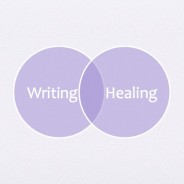Writing and Healing and Sweets
The first time I went to a Bar Mitzvah I loved the part where someone—the rabbi?—scattered candy across the steps at the front of the temple and the children were invited to come forward and retrieve it. The rabbi explained something about making a connection for the children—between Torah and sweetness. Not just telling them the Torah is sweet, but letting them experience the connection: reading the Torah and tasting sweetness. This week I looked this up (Google: Torah child sweet) and found a piece written by a Rabbi Levi Cooper. He explains a tradition in hassidic communities of initiating children into the study of Torah at a very young age—at the age of three—and doing so with a cookie. The teacher offers the child a cookie in the shape of the Hebrew letter, aleph. When the child can correctly identify the letter the cookie is dipped in honey and the child gets to eat the cookie. “Thus,” Rabbi Cooper writes, “we bless our children that their Torah study should always be as sweet as honey.” Wikipedia adds this: This is not just to show the child that learning is “sweet”, nor that Torah study is “sweet”, but also, to learn the sweetness of the Hebrew language. I love that—to learn the sweetness of the language. In my last year of college I managed to schedule my classes so that on Thursdays I had only one class—an eight o’clock. I loved Thursdays. As soon as class was over, at 9:15, I walked out of the classroom, across campus, and down Rockhill Road to the Alameda Plaza. This was in Kansas City, Missouri. The Plaza was, and still is now, this lovely outdoor shopping square with restaurants and shops. Back then there was a restaurant there which was called, simply, The Place. I’d go to The Place on Thursday mornings and I’d order the same breakfast each time. A poached egg. An English muffin. Strawberries with cream. A mug of coffee. The strawberries came in a blue bowl. The coffee was strong and hot. The cream was real. I ate and I wrote. For me, it was the beginning of falling in love with writing. And this falling in love with writing was all of one piece with the egg and the strawberries and the blue bowl that the strawberries came in and the strong coffee, the real cream. A strawberry can be a sweet. A chocolate can be a sweet. A good cup of coffee. A hot cup of tea. A new mug. A blue bowl. A good pen. Pat Schneider, a woman who has taught writing workshops for some twenty-five years, has written a very good and useful book about writing called Writing Alone and with Others. In a chapter on discipline, she suggests that the discipline of writing does not arise best out of obligation but will always arise best out of love. p. 51. “Rather,” she says, “than thinking of going to your writing desk as the ‘ought’ and ‘should’ work of your life, think of it as a longed-for pleasure, as a hot fudge sundae, as that which pleases you, delights you, that which you love” Yes, I agree. Though, for me at least, I sometimes find it’s easier for me to think of writing...
read more
